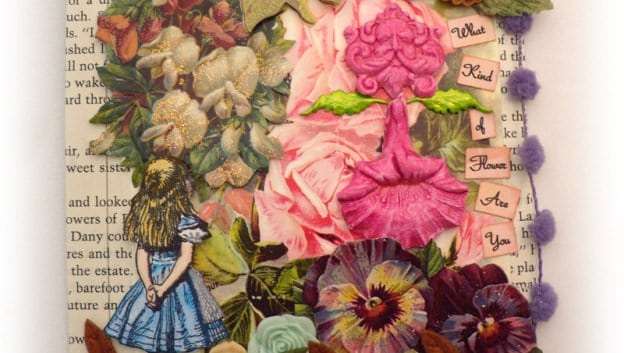A red rose means love. A daisy, innocence. A violet signifies faithfulness. Vanessa Diffenbaugh’s bestselling novel The Language of Flowers (Ballantine, 2011) sparked renewed interest in Victorian “floriography,” or flower symbolism. Recipients used floral dictionaries to decode the meanings of complicated “talking bouquets” and made floral arrangements to communicate feelings society would not permit them to say aloud. To celebrate spring, BookTrib offers a bouquet of seasonal blooms and their fictional counterparts. These female characters (and one real-life heroine) are no shrinking violets.
Daffodil: Scarlett O’Hara (Gone with the Wind)

 The daffodil, also called the narcissus, has several meanings in floriography. Sharing a name with a Greek character who falls in love with his own reflection, it’s no surprise that one of these meanings is “self-regard.” Daffodils also symbolize female ambition. Gone with the Wind’s Scarlett O’Hara shifts her ambitions from winning Ashley Wilkes to saving her family’s plantation. Her self-regard is both a tragic flaw and a source of survival.
The daffodil, also called the narcissus, has several meanings in floriography. Sharing a name with a Greek character who falls in love with his own reflection, it’s no surprise that one of these meanings is “self-regard.” Daffodils also symbolize female ambition. Gone with the Wind’s Scarlett O’Hara shifts her ambitions from winning Ashley Wilkes to saving her family’s plantation. Her self-regard is both a tragic flaw and a source of survival.
Lily of the Valley: Jane Eyre (Jane Eyre)
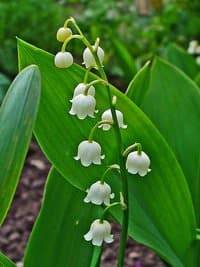
 Based on a legend describing a nightingale’s return to the woods when the lily of the valley bloomed, this flower symbolizes the return of happiness. In Christian lore, the tear-shaped flowers represent sorrow, humility, and hope for a better world. Jane Eyre finds temporary happiness with Mr. Rochester before learning about his first wife. In her sorrow, she flees to a humble life on the moors. Jane’s unwavering principles are rewarded and happiness is restored when she reunites with the widowed Mr. Rochester.
Based on a legend describing a nightingale’s return to the woods when the lily of the valley bloomed, this flower symbolizes the return of happiness. In Christian lore, the tear-shaped flowers represent sorrow, humility, and hope for a better world. Jane Eyre finds temporary happiness with Mr. Rochester before learning about his first wife. In her sorrow, she flees to a humble life on the moors. Jane’s unwavering principles are rewarded and happiness is restored when she reunites with the widowed Mr. Rochester.
Pincushion Flower: Miss Havisham (Great Expectations)
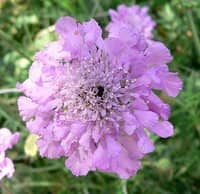
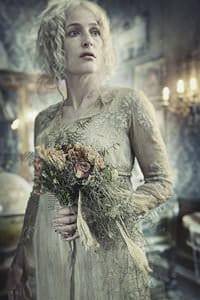 Also known as the “mourning bride,” the pincushion flower has a long association with widowhood, particularly in its darker-hued varieties. In Victorian flower language, it symbolizes an unfortunate attachment and means, “I have lost all.” The jilted bride Miss Havisham, of Charles Dickens’s Great Expectations, is so famous for losing everything through her unfortunate attachment that a variety of pincushion flower is named for her.
Also known as the “mourning bride,” the pincushion flower has a long association with widowhood, particularly in its darker-hued varieties. In Victorian flower language, it symbolizes an unfortunate attachment and means, “I have lost all.” The jilted bride Miss Havisham, of Charles Dickens’s Great Expectations, is so famous for losing everything through her unfortunate attachment that a variety of pincushion flower is named for her.
Datura: Cathy Ames (East of Eden)

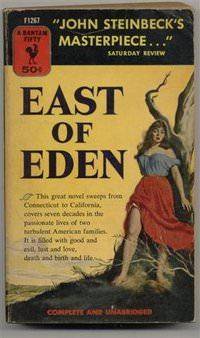 The lovely datura, whose showy blooms have earned it the common name “angel’s trumpet,” is as toxic as it is beautiful. Its hallucinogenic properties have been known at least since the 17th century, when soldiers in the Jamestown colony exhibited bizarre behavior after consuming the plant. (“Jimson weed,” a common name for datura leaves, is an abbreviation of “Jamestown weed.”) Datura is deadly in large enough doses, and the fatally attractive flower symbolizes deceitful charm. Cathy Ames, the sociopathic antagonist in John Steinbeck’s East of Eden, bewitches men with her pretty manners and physical beauty. She destroys everyone in her wake.
The lovely datura, whose showy blooms have earned it the common name “angel’s trumpet,” is as toxic as it is beautiful. Its hallucinogenic properties have been known at least since the 17th century, when soldiers in the Jamestown colony exhibited bizarre behavior after consuming the plant. (“Jimson weed,” a common name for datura leaves, is an abbreviation of “Jamestown weed.”) Datura is deadly in large enough doses, and the fatally attractive flower symbolizes deceitful charm. Cathy Ames, the sociopathic antagonist in John Steinbeck’s East of Eden, bewitches men with her pretty manners and physical beauty. She destroys everyone in her wake.
Gladiolus: Hermione Granger (Harry Potter series)
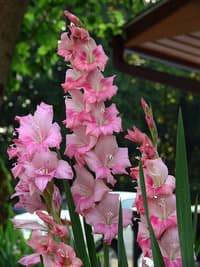
 Named for its long, slender shape, gladiolus shares the same Latin root word as gladiator—gladius, or sword. It symbolizes preparedness, strength, and moral integrity. In Victorian floriography, the gladiolus signified infatuation. The gift of a gladiolus meant the giver’s heart was pierced with love for the recipient. Hermione Granger is among the strongest female characters in contemporary fiction. Much of her strength derives from intelligence and preparedness. She often serves as the voice of morality, but she is not immune to infatuation. Occasionally, her heart overrules her high moral standards.
Named for its long, slender shape, gladiolus shares the same Latin root word as gladiator—gladius, or sword. It symbolizes preparedness, strength, and moral integrity. In Victorian floriography, the gladiolus signified infatuation. The gift of a gladiolus meant the giver’s heart was pierced with love for the recipient. Hermione Granger is among the strongest female characters in contemporary fiction. Much of her strength derives from intelligence and preparedness. She often serves as the voice of morality, but she is not immune to infatuation. Occasionally, her heart overrules her high moral standards.
Pink Carnation: Thelma Toole (A Confederacy of Dunces)
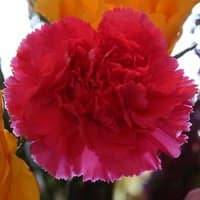
 Like the lily of the valley, the pink carnation is said to have sprung from the tears of the Virgin Mary upon her son’s death. The flower represents a mother’s undying love and in Victorian floriography means, “I will never forget you.” John Kennedy Toole’s Pulitzer Prize-winning novel A Confederacy of Dunces would not have been published without the efforts of Toole’s mother, Thelma. Thelma Toole discovered her son’s manuscript after his suicide. Thanks to her persistence in seeking publication, the world will never forget John Kennedy Toole or his eccentric protagonist Ignatius J. Reilly.
Like the lily of the valley, the pink carnation is said to have sprung from the tears of the Virgin Mary upon her son’s death. The flower represents a mother’s undying love and in Victorian floriography means, “I will never forget you.” John Kennedy Toole’s Pulitzer Prize-winning novel A Confederacy of Dunces would not have been published without the efforts of Toole’s mother, Thelma. Thelma Toole discovered her son’s manuscript after his suicide. Thanks to her persistence in seeking publication, the world will never forget John Kennedy Toole or his eccentric protagonist Ignatius J. Reilly.
What flower do YOU associate with a fictional character, or vice versa?
Image Credits:
Featured image: http://cmoh.blogspot.com/2012/08/what-kind-of-flower-are-you-making-it.html
Daffodil: http://en.wikipedia.org/wiki/
Scarlett O’Hara: http://en.wikipedia.org/wiki/
Lily of the valley: http://en.wikipedia.org/wiki/
Pincushion flower: http://en.wikipedia.org/wiki/
Miss Havisham: http://www.telegraph.co.uk/culture/culturepicturegalleries/8907506/Gillian-Anderson-Helena-Bonham-Carter-and-Miss-Havisham-on-film.html
Datura: http://en.wikipedia.org/wiki/
Cathy Ames: http://drytoasts.com/2009/09/
Gladiolus: http://en.wikipedia.org/wiki/
Hermione Granger: https://en.wikipedia.org/wiki/Hermione_Granger
Pink carnation: http://en.wikipedia.org/wiki/
Thelma Toole : http://www.bestofneworleans.

